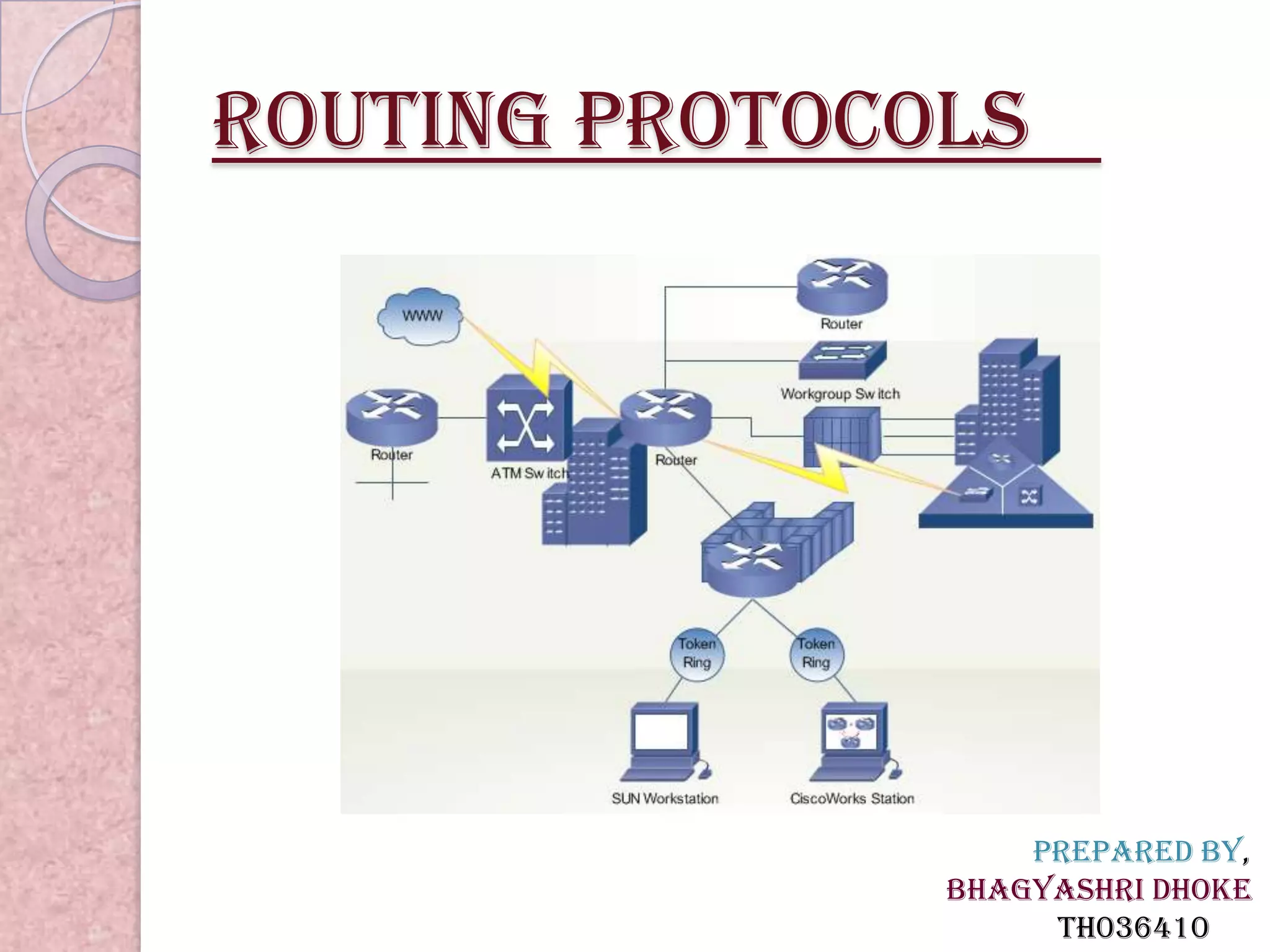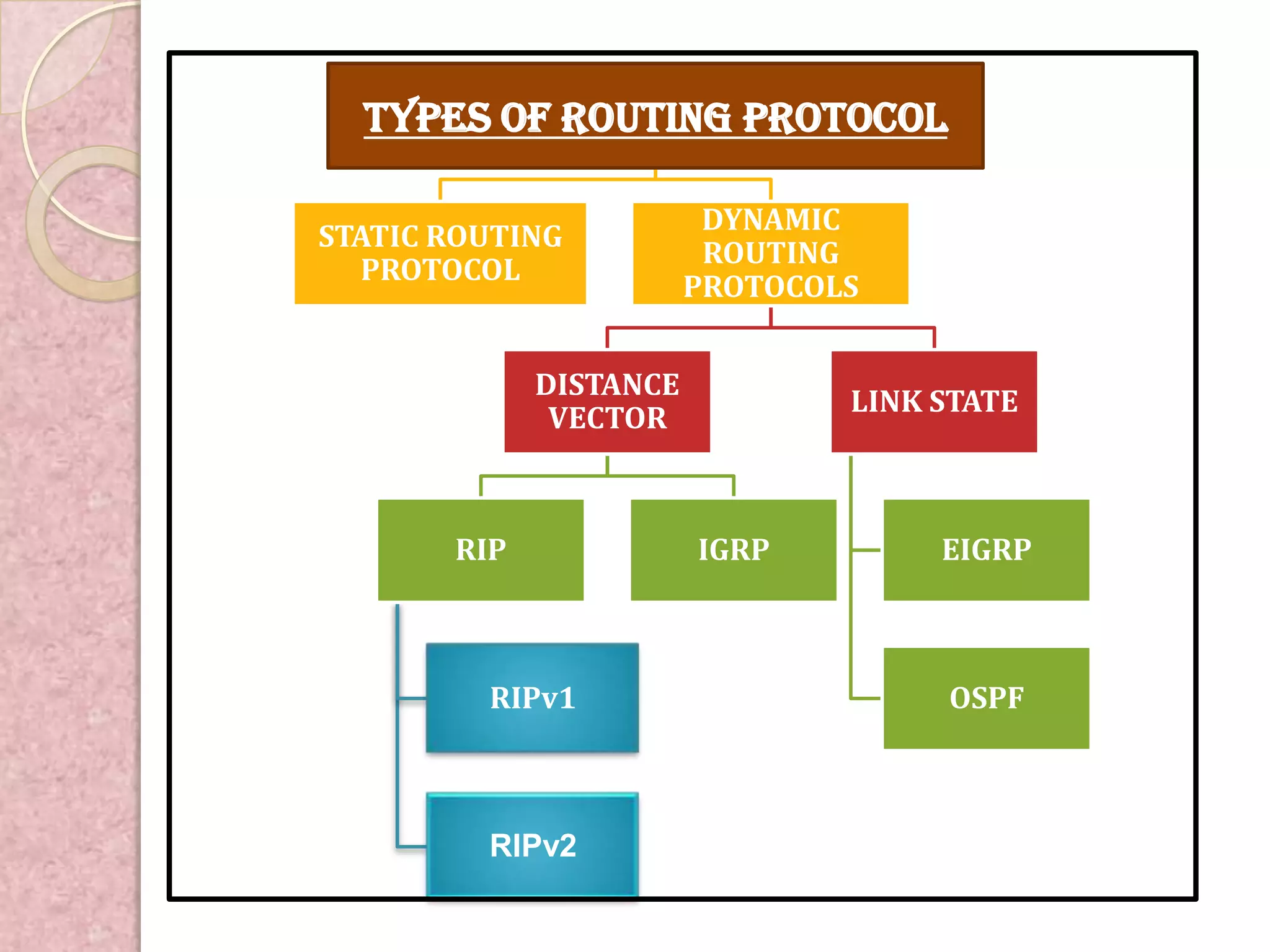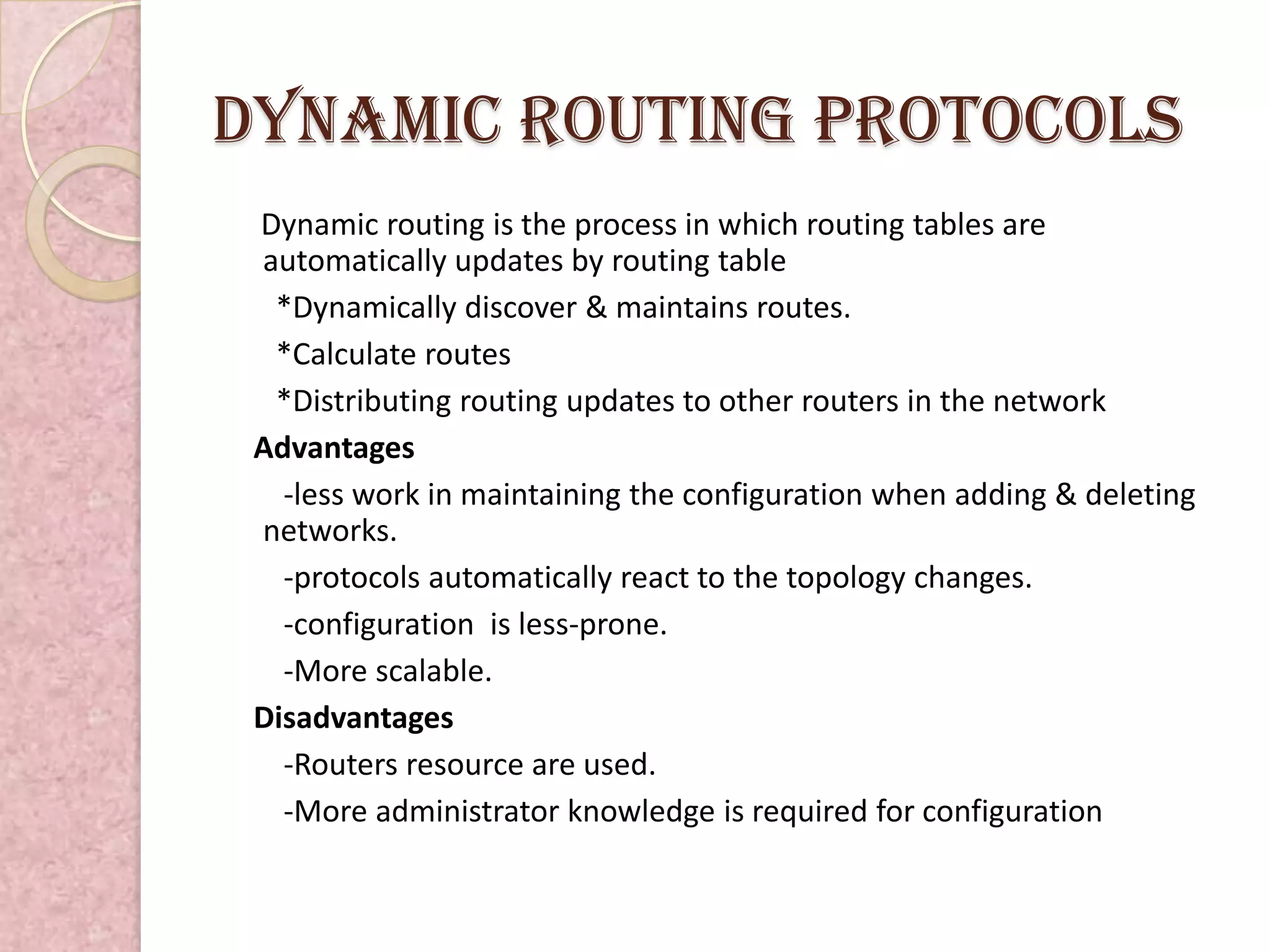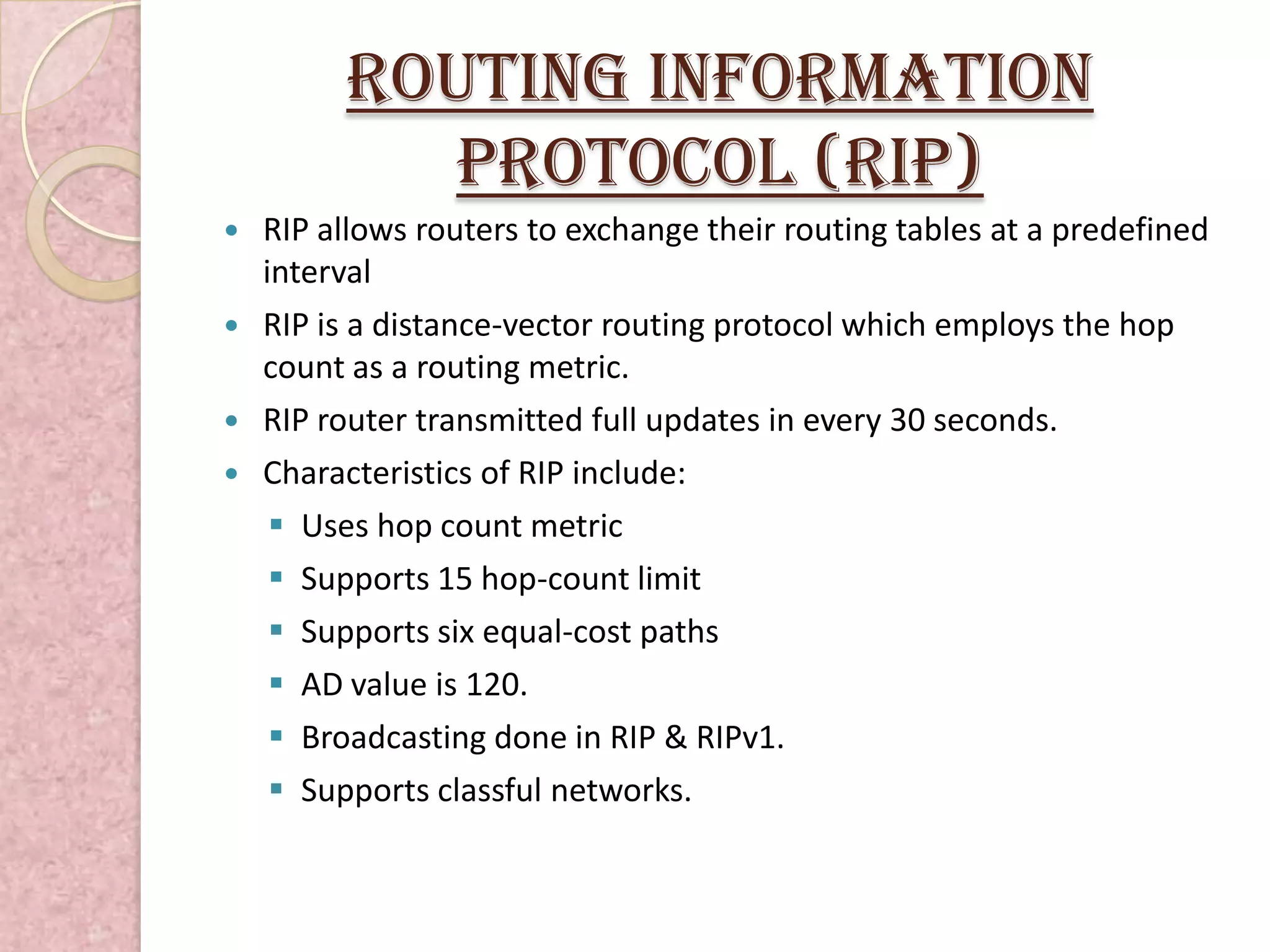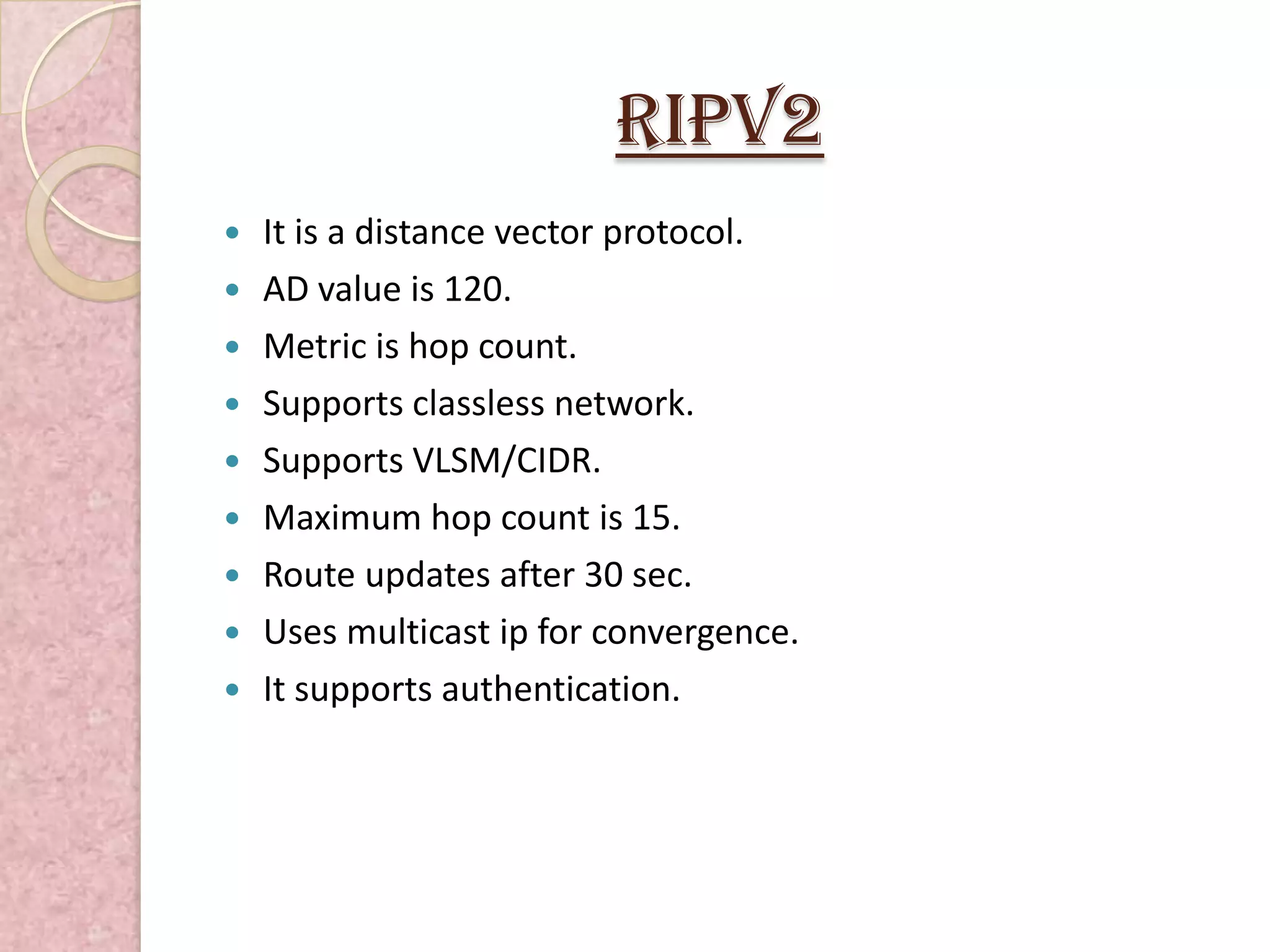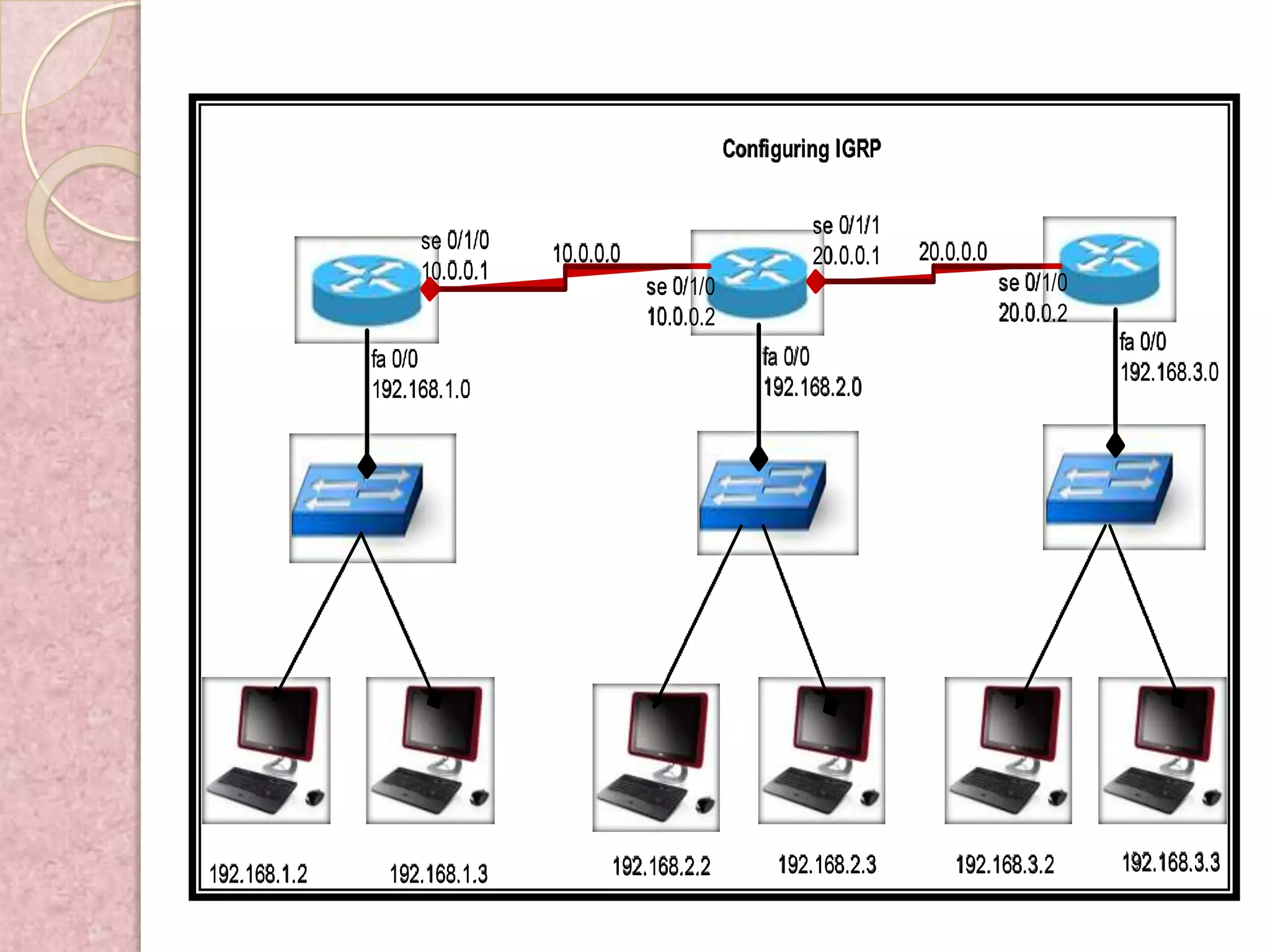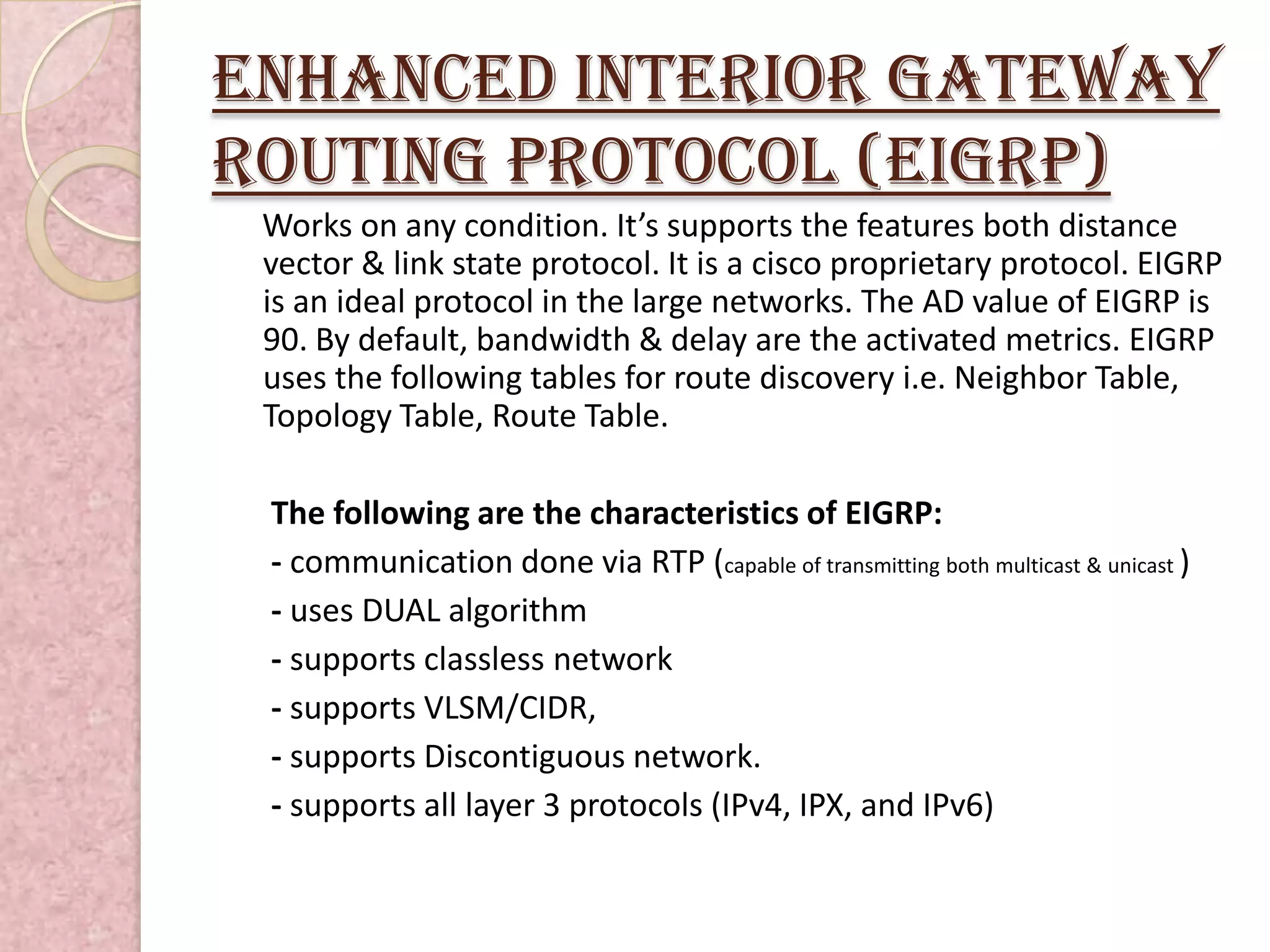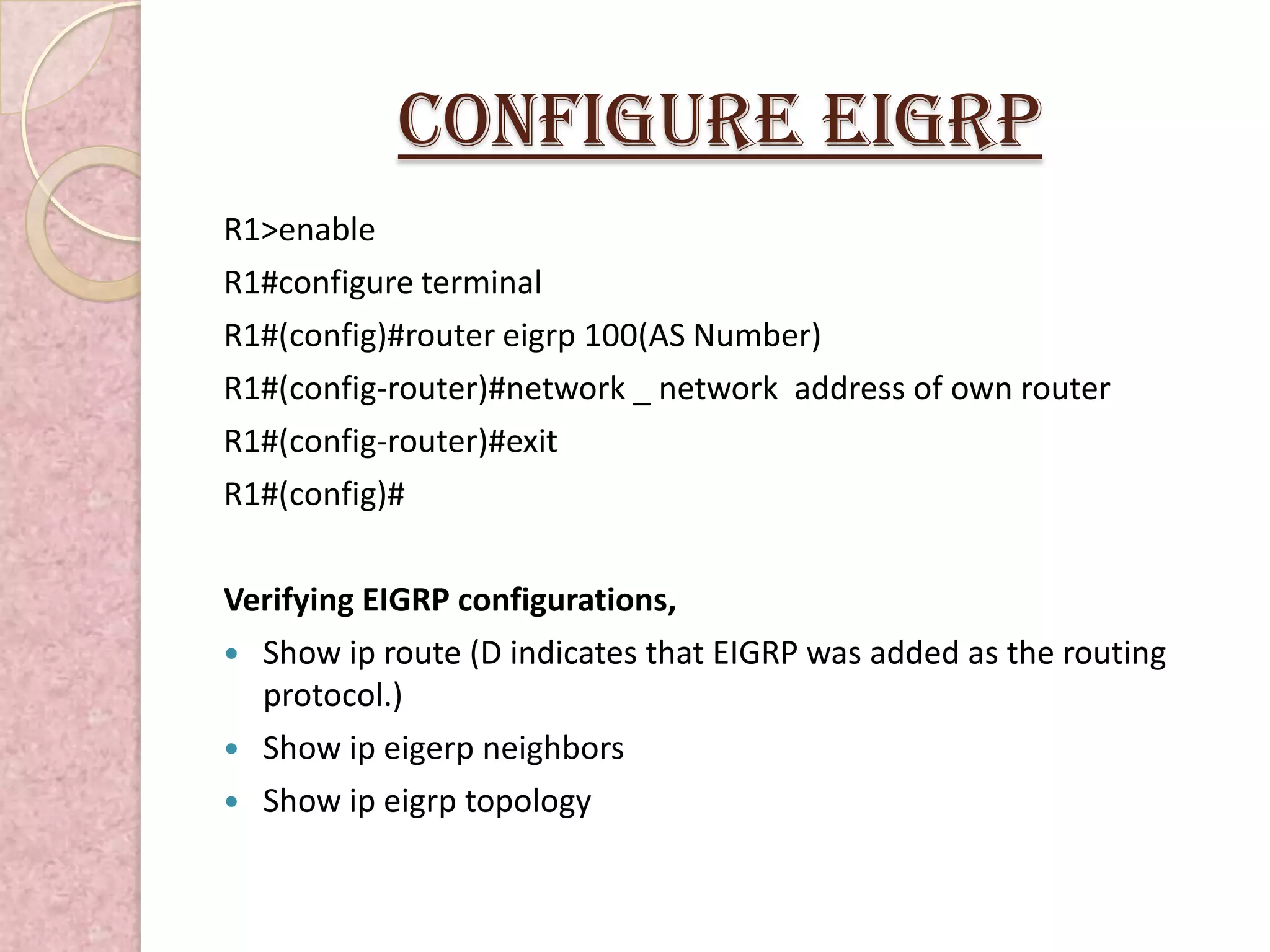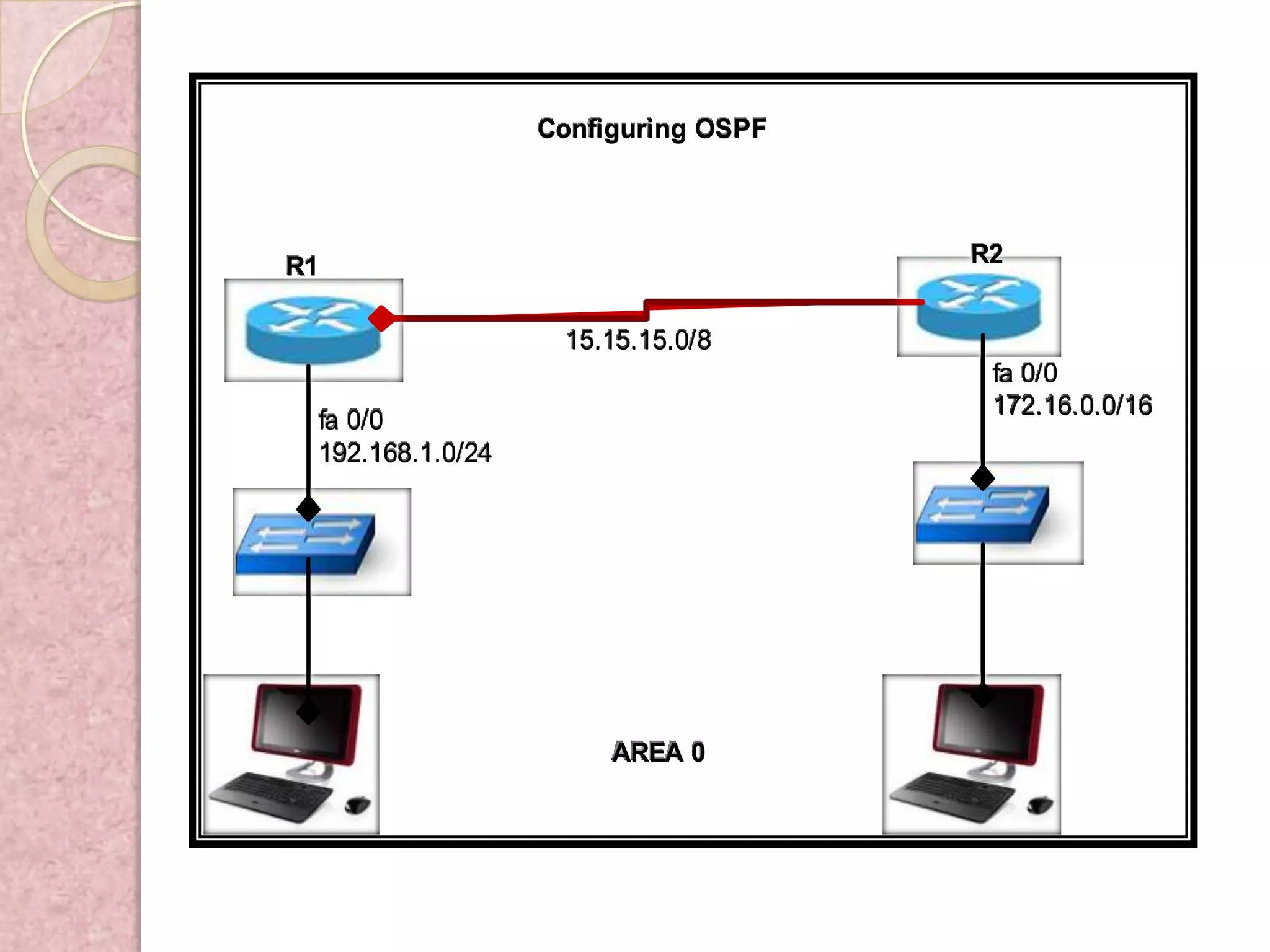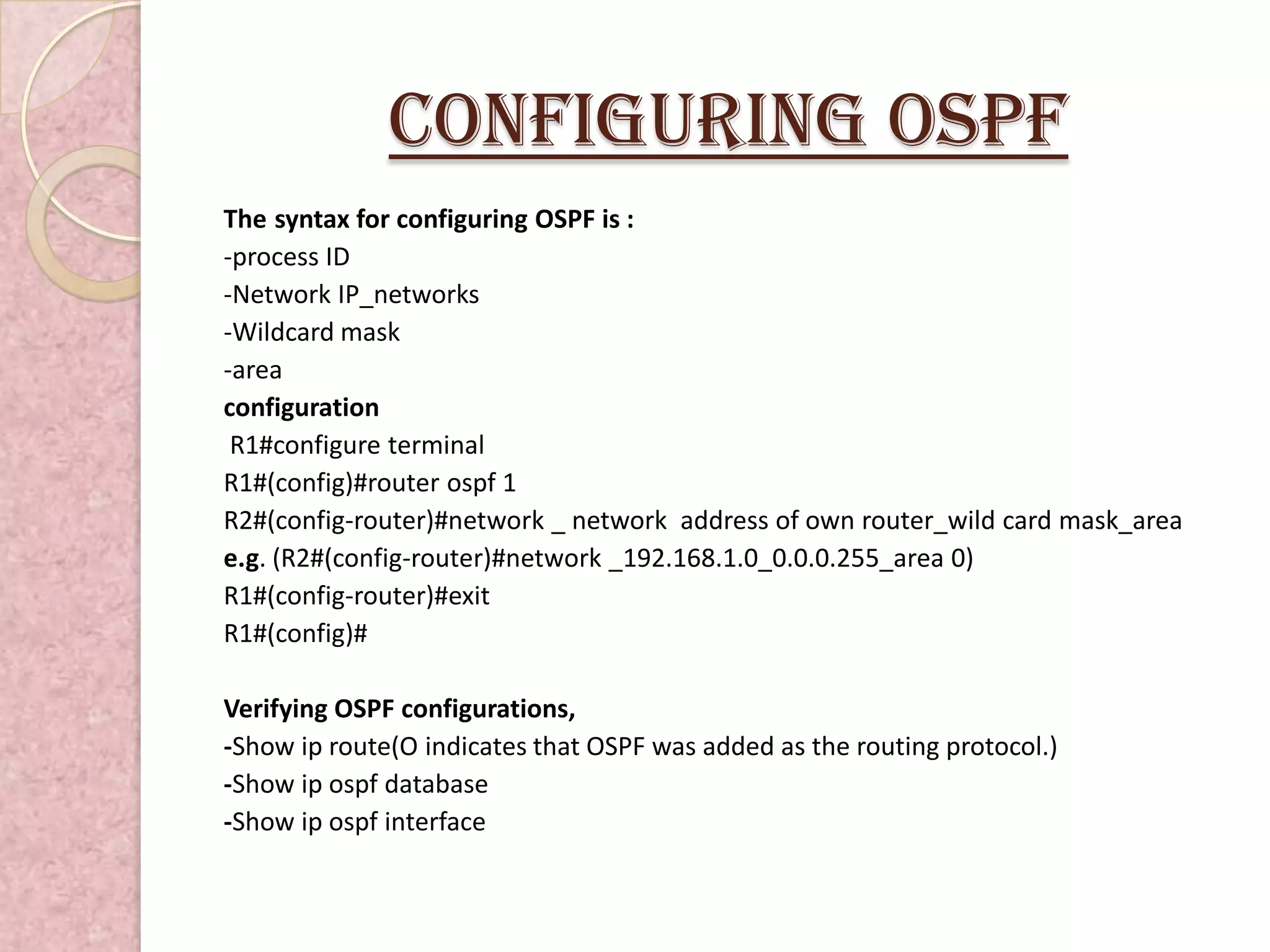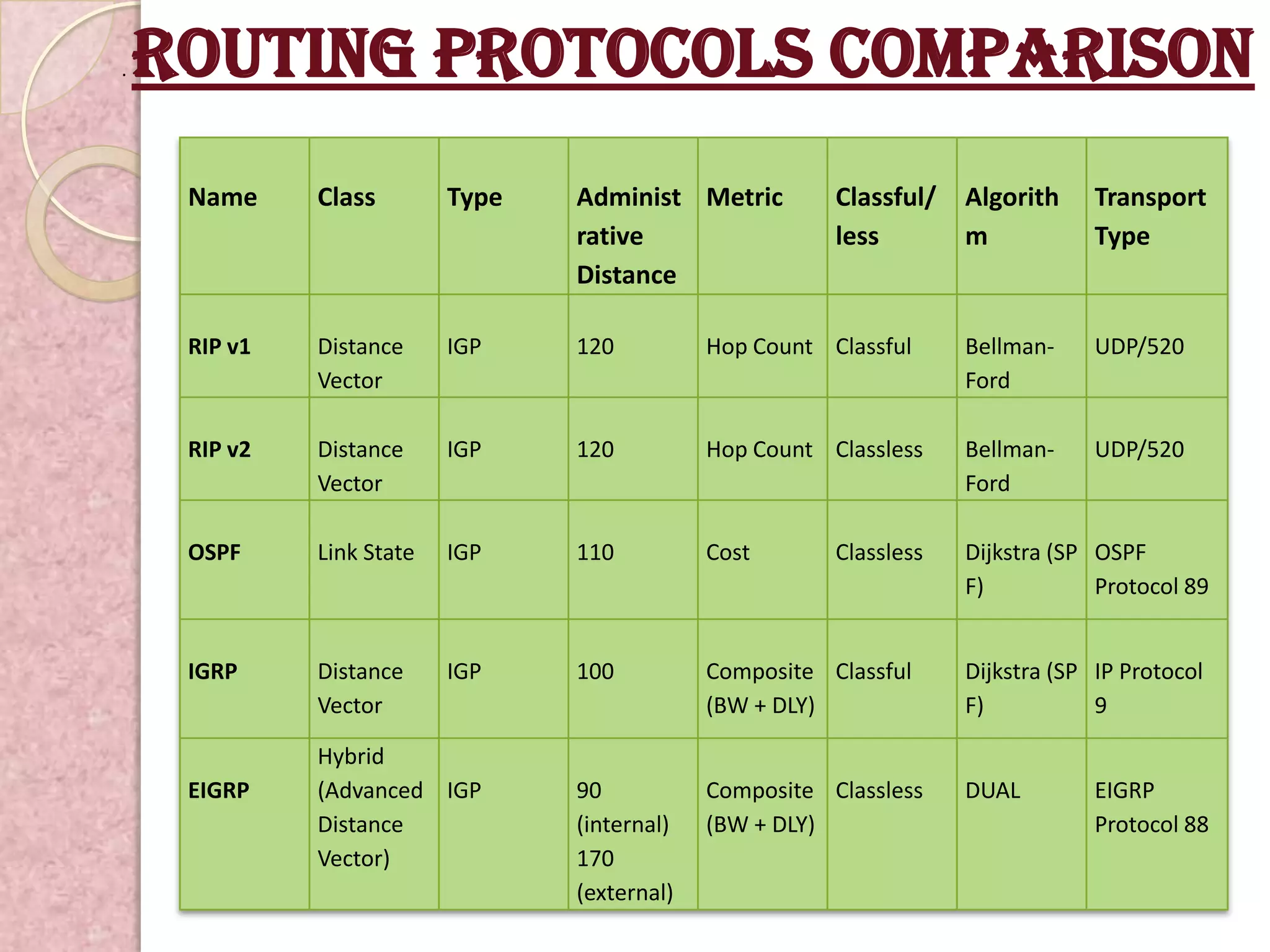Routing protocols allow routers to communicate and exchange information that helps determine the best path between networks. The main types are static routing, where routes are manually configured, and dynamic routing, where routes are automatically updated as network conditions change. Common dynamic routing protocols include RIP, IGRP, EIGRP, and OSPF, which use different algorithms and metrics like hop count or bandwidth to calculate the best routes.
